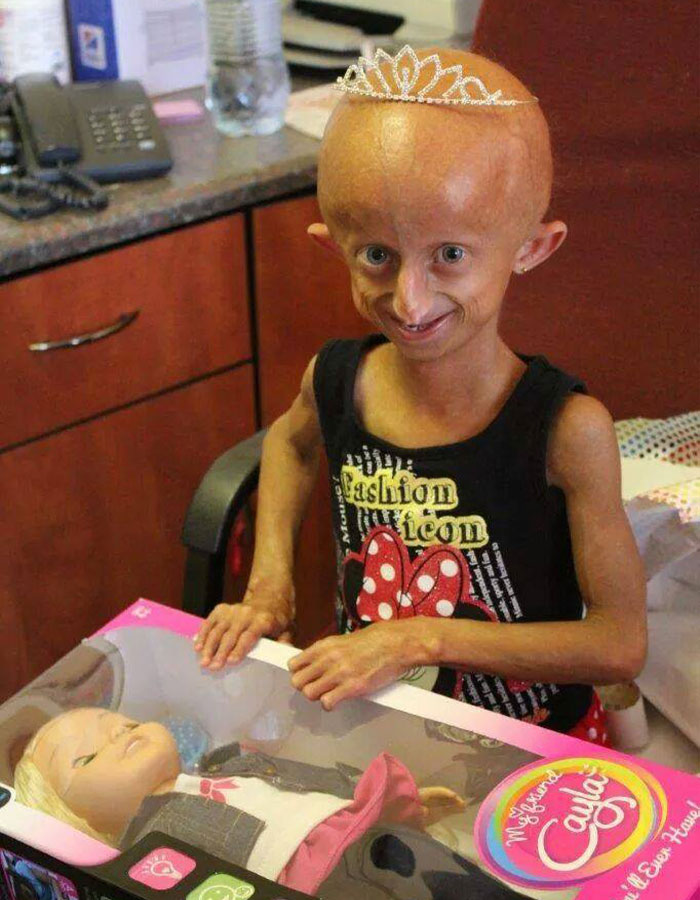Beandri Booysen, a teenage girl who radiated an undeniable “hope and joy” for life despite suffering from an extremely rare aging disease, passed away just days before Christmas. She was 19 years old.
Diagnosed at seven months old with Progeria — also known as Hutchinson-Gilford progeria syndrome — Beandri was not expected to live past the age of 14, as her condition forced her to age eight times faster than the average human.
- Beandri Booysen, a teenage girl with Progeria, has passed away at 19 years old.
- Despite aging eight times faster, Beandri inspired thousands on TikTok with her positivity as she raised awareness for those with "special needs."
- She was the last person in South Africa living with Progeria and lived past her life expectancy.
- Her motto was 'Be yourself. Love yourself. Believe in yourself.'
- Beandri dreamt of marrying at 25 years old and becoming a mother to twins, before hopefully pursuing a job as a teacher.
But in her nearly two decades of life, her heartwarming content on social media inspired thousands of viewers online.
A teenage girl, who suffered from a condition that caused her body to age prematurely, has sadly passed away
Image credits: Bea Booysen
On Wednesday, December 18, her mother, Bea Booysene, confirmed the news on her daughter’s Facebook page titled “In Loving Memory of Beandri Booysen.”
“It is with deep sadness that we announce the passing of Beandri Booysen, one of South Africa’s most beloved and inspirational young women,” Bea wrote in a text now translated into English.
“Beandri was not only known for her vibrant personality and infectious laugh, but was also the last surviving person in South Africa to live with Progeria.”
Image credits: Bea Booysen
She continued, “She was a voice and a symbol of awareness for Progeria and other special needs, and inspired thousands with her unique spirit. She never stopped fighting.”
While a memorial service is yet to be announced, her family has requested privacy during this “extremely difficult time.”
Beandri’s presence on social media was undeniable, as she used her platform to “raise awareness”
Image credits: Bea Booysen
From the beginning, Beandri’s motto was simple: “Be yourself. Love yourself. Believe in yourself.”
The 19-year-old was determined to show exactly that on TikTok, where she had nearly 300,000 followers, with many of her videos garnering hundreds of thousands of views.
Image credits: Bea Booysen
In an interview earlier this year, Beandri spoke about how she wished to use social media as a way to “inspire” and “motivate” her audience, sharing tips on how to adapt her positive mindset.
“I face everything that God brings into my life and I credit my family for my strength and support by raising me as a ‘normal’ child and not one to be seen as different to others,” she said.
Image credits: Bea Booysen
Her hope was to highlight “other special needs individuals and show that everyone is different and unique in their own way and to give strength” in any way she could.
According to the Daily Mail, Beandri only weighed 12kg. Despite this setback, she still attended school and had big dreams of settling down and having kids at 25 years old — before hopefully landing a job as a teacher.
Beandri was determined to spread positivity, despite her limiting disease
Image credits: Bea Booysen
The odds of having a child with progeria are 1 in 4 million, as per the Cleveland Clinic. This means only 400 young adults and children in the world currently suffer from the disease.
Symptoms start to show within a toddler’s first two years of life which include—but are not limited to—wrinkled skin, growth failure, balding, and loss of body fat.
Image credits: Bea Booysen
The average life expectancy hovers at around 14-15 years old. Some may die younger while others can live to see their second decade of life.
While there is currently no cure for progeria, researchers are actively studying various drugs in order to treat this condition.
Netizens offered their condolences and reflected on her continuously optimistic outlook
Poll Question
Thanks! Check out the results:
Explore more of these tags
I notice that many (most?) photos of progeria show them having very large skulls. Is this because their brains are a lot larger? If, in fact, they’re incredibly smart people, it seems society is being deprived of who knows what potential amazing things. I’m especially imagining them getting doctorates in science and solving the problem of progeria. 😰😰😰 I feel so bad for progeria sufferers and their families, but if they really do have huge brains then I’d feel even worse for humanity that they’re not able to live long enough to solve some desperate problems. (This obviously assumes they’re *able* to study and research given what must be awful physical pain.) I swear Mother Nature is sometimes a cruel and miserable b***h because it sometimes looks as if she’s doing awful things to amuse herself. 🥵 (Yes, of course I’m anthropomorphizing Mother Nature; I spose it’s my way of trying to deal with tragedy by having something to blame. 😞)
Their skulls are actually average in size but they form smaller cheekbones and jaws due to the disease. Either way the size of the skull or brain hasn't been shown to denote ones intelligence.
Load More Replies...I notice that many (most?) photos of progeria show them having very large skulls. Is this because their brains are a lot larger? If, in fact, they’re incredibly smart people, it seems society is being deprived of who knows what potential amazing things. I’m especially imagining them getting doctorates in science and solving the problem of progeria. 😰😰😰 I feel so bad for progeria sufferers and their families, but if they really do have huge brains then I’d feel even worse for humanity that they’re not able to live long enough to solve some desperate problems. (This obviously assumes they’re *able* to study and research given what must be awful physical pain.) I swear Mother Nature is sometimes a cruel and miserable b***h because it sometimes looks as if she’s doing awful things to amuse herself. 🥵 (Yes, of course I’m anthropomorphizing Mother Nature; I spose it’s my way of trying to deal with tragedy by having something to blame. 😞)
Their skulls are actually average in size but they form smaller cheekbones and jaws due to the disease. Either way the size of the skull or brain hasn't been shown to denote ones intelligence.
Load More Replies...
 Dark Mode
Dark Mode 

 No fees, cancel anytime
No fees, cancel anytime 


































































36
4